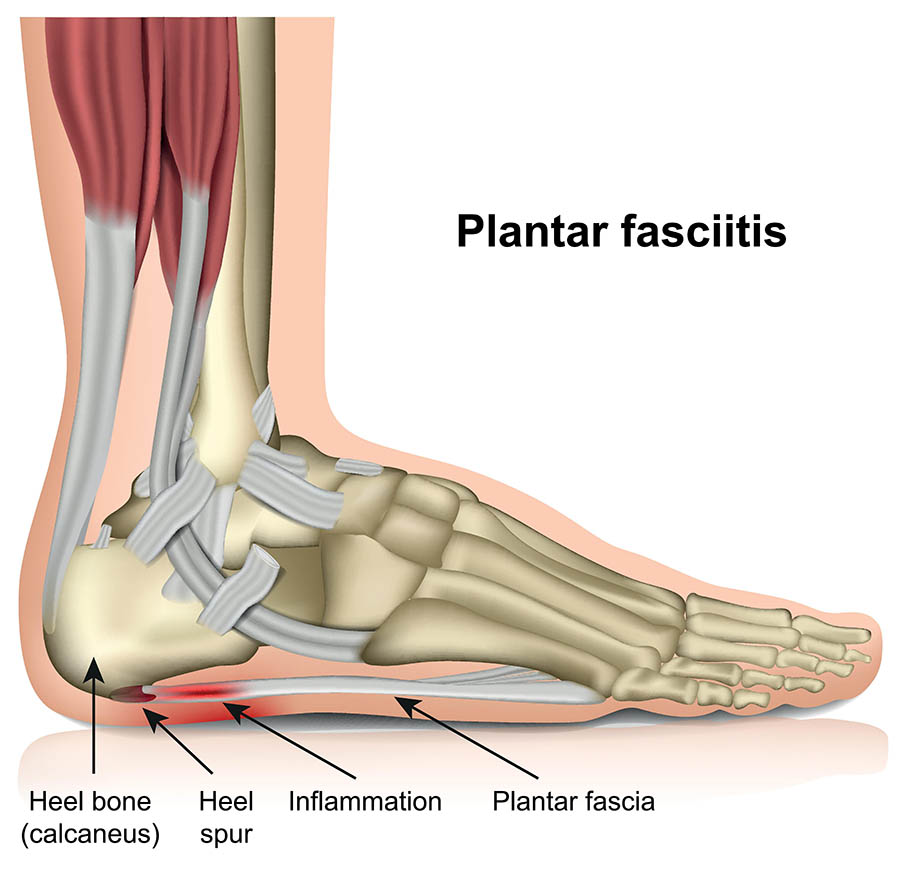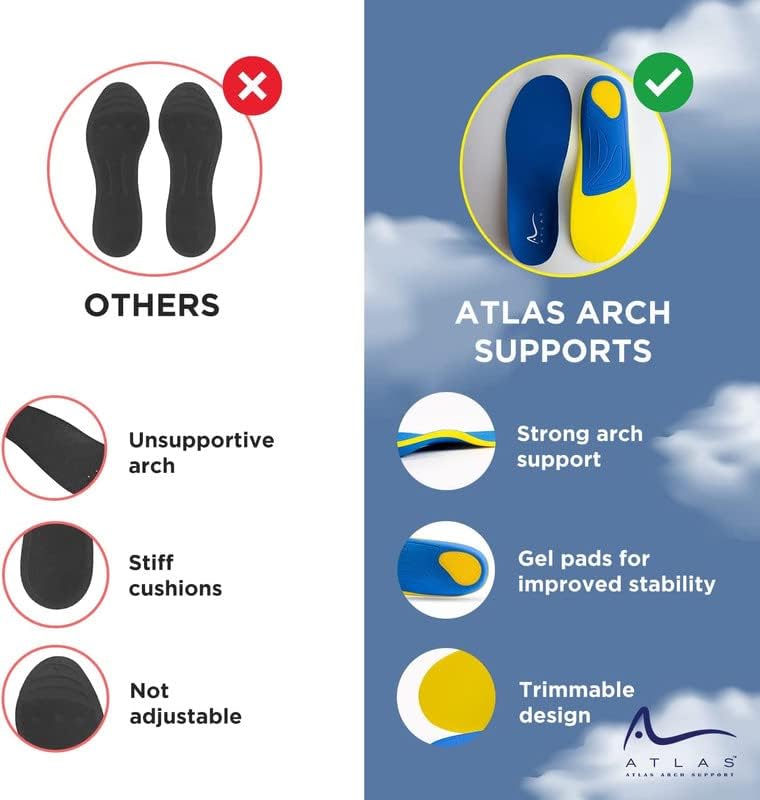Discover effective plantar fasciitis exercises designed to alleviate pain, strengthen foot muscles, and improve flexibility. Our expert guide offers step-by-step instructions for exercises that target the root causes of plantar fasciitis, providing a natural path to foot health and mobility. Start your journey to relief today with our comprehensive exercise regimen.

Introduction
Embark on a journey to foot health and freedom from plantar fasciitis with our expert guide. Plantar fasciitis, a common yet painful foot condition, can significantly impact your daily life. But fear not! Our carefully selected exercises are your first step towards relief, offering a natural and effective path to recovery. Strengthen, stretch, and stabilize your way to wellness with our comprehensive approach, tailored to rejuvenate your feet and reclaim your mobility.
Table of Contents
Top Plantar Fasciitis Exercises to Alleviate Pain

To enhance foot health and prevent conditions like plantar fasciitis, incorporating specific exercises into your daily routine is crucial. These exercises are designed to strengthen the muscles, improve flexibility, and support the overall structure of your feet. Here’s a more detailed look at each exercise, including their purposes and step-by-step instructions:
1. Toe Curls
Purpose: Toe curls target the muscles at the bottom of your feet, especially those that support your arches. By strengthening these muscles, you can enhance your foot’s stability and reduce the likelihood of developing plantar fasciitis.
How to Perform:
- Sit in a chair with your feet flat on the ground and place a small towel on the floor in front of your feet.
- Keep your heel stationary on the ground, and use your toes to grip the towel, scrunching it towards you.
- After pulling the towel closer, extend your toes to push it back to its starting position.
- Aim for 3 sets of 10-15 repetitions for each foot.
Tips: Keep your heel grounded to isolate the movement to your toes and arch. Progress gradually with added resistance to avoid overstraining.
2. Calf Stretches
Purpose: Tight calf muscles can put unnecessary strain on your Achilles tendon and plantar fascia, potentially leading to discomfort and pain. Calf stretches help maintain flexibility in your leg muscles, mitigating the risk of foot strain.
How to Perform:
- Stand an arm’s length from a wall with your hands placed on the wall at eye level.
- Step one foot back, keeping it straight and pressing the heel firmly to the ground.
- Bend your front knee and lean forward towards the wall until you feel a stretch in the calf of your back leg.
- Hold this position for 30 seconds before switching legs. Repeat 2-3 times per leg.
Tips: Maintain a straight back and evenly distribute your weight between both legs. Ensure the back foot’s heel remains on the ground for an effective stretch.
3. Plantar Fascia Stretch
Purpose: Directly targeting the plantar fascia, this stretch aims to relieve tension and enhance flexibility in the foot, preventing the tightness that leads to plantar fasciitis pain.
How to Perform:
- Sit down and cross one leg over the knee of your other leg.
- Grasp the toes of your crossed leg and gently pull them towards your shin until you feel a stretch along the bottom of your foot.
- Maintain this position for 30 seconds, then switch feet. Repeat 2-3 times for each foot.
Tips: Perform this stretch gently to avoid overstretching. Focus on feeling a smooth stretch along the bottom of your foot.
4. Achilles Tendon Stretch
Purpose: This exercise aims to reduce tension in the Achilles tendon and calf muscles, which are connected to the plantar fascia. Alleviating tightness in these areas can help prevent exacerbation of plantar fasciitis symptoms.
How to Perform:
- Stand on a step or an elevated surface with the balls of your feet on the edge, allowing your heels to hang off.
- Gently lower your heels below the step level to stretch your Achilles tendon and calves.
- Hold for 30 seconds, then lift your heels back up. Repeat 2-3 times.
Tips: Use a step or raised surface that is stable. Move slowly into the stretch to prevent any jerky movements that could cause injury.
5. Marble Pickups
Purpose: This exercise improves the dexterity and strength of the small muscles in your feet.
How to Perform:
- Sit in a chair and place 20 marbles on the floor in front of you.
- Using the toes of one foot, pick up one marble at a time and place it into a bowl.
- Complete the task with one foot before switching to the other.
- Aim to do this exercise once daily with each foot.
Tips: Start with fewer marbles if picking up 20 is too challenging initially. Ensure you’re comfortably seated to avoid straining your back.
6. Towel Stretch
Purpose: The towel stretch targets the plantar fascia, Achilles tendon, and calf muscles, helping to alleviate morning stiffness and pain.
How to Perform:
- Sit on the floor with your legs stretched out in front of you.
- Loop a towel around the ball of one foot and hold the ends of the towel in your hands.
- Gently pull the towel towards you while keeping your knee straight, feeling a stretch along the bottom of your foot and calf.
- Hold for 15-30 seconds. Repeat 2-3 times for each foot, especially before getting out of bed in the morning.
Tips: Keep your knee straight to ensure the stretch extends to your calf. Adjust the tension on the towel to find a comfortable stretch level.
7. Ankle Pumps
Purpose: Ankle pumps are great for improving blood circulation in the feet and reducing swelling, which can help alleviate pain associated with plantar fasciitis.
How to Perform:
- Lie on your back with your legs extended upwards against a wall or in the air.
- Flex your ankles, pointing your toes towards you, and then away from you.
- Perform this motion smoothly for 2-3 minutes, several times a day.
Tips: Perform this exercise smoothly without rushing, focusing on the full range of motion to maximize blood flow.
8. Seated Foot Roll
Purpose: Rolling the foot over a round object can massage the plantar fascia, providing relief from pain and tightness.
How to Perform:
- Sit in a chair and place a tennis ball, golf ball, or foam roller under your foot.
- Gently roll the object back and forth from your heel to your toes.
- Apply moderate pressure to massage the bottom of your foot.
- Continue for 2-3 minutes on each foot, once or twice daily.
Tips: Apply pressure as tolerated; it should feel like a deep massage but not painful. Experiment with different objects to find what works best for you.
9. Arch Lifts
Purpose: Arch lifts strengthen the muscles inside your arch and improve foot stability.
How to Perform:
- Stand with your feet hip-width apart on a flat surface.
- Keep your toes flat on the ground, lift your arches by rolling your weight to the outer edges of your feet.
- Hold for a few seconds, then release.
- Perform 2-3 sets of 10-15 repetitions daily.
Tips: Start slowly, focusing on the quality of the movement rather than quantity. Ensure you’re standing on a non-slip surface.
10. Heel Raises
Purpose: Heel raises strengthen the muscles around the Achilles tendon and improve ankle stability.
How to Perform:
- Stand behind a chair or counter for support.
- Slowly lift your heels off the ground, rising onto your toes.
- Hold for a moment at the top, then lower back down.
- Perform 2-3 sets of 10-15 repetitions daily.
Tips: Keep the movement controlled, especially on the way down, to engage the muscles effectively. Use a wall or chair for balance if needed.
11. Short Foot Exercise
Purpose: This exercise aims to strengthen the intrinsic muscles of the foot, improving arch support and stability.
How to Perform:
- Sit or stand with your feet flat on the ground.
- Without curling your toes, try to shorten your foot by pulling the ball of your foot towards your heel. Imagine trying to create a dome with the arch of your foot.
- Hold the position for 5-10 seconds, then release.
- Perform 2-3 sets of 10 repetitions on each foot.
Tips: Imagine pulling a string from your heel to your toes to create the arch without curling your toes.
12. Toe Spread and Press
Purpose: This exercise improves the control and strength of the muscles in your feet, enhancing toe spread and grip.
How to Perform:
- Sit with your feet flat on the floor.
- Spread your toes as wide as possible without straining, then press them down into the floor.
- Hold for a few seconds, then relax.
- Aim for 2-3 sets of 10 repetitions.
Tips: Aim for a full range of motion in spreading your toes without forcing uncomfortably.
13. Toe Extension
Purpose: Toe extensions help in stretching and strengthening the muscles under your feet, relieving tension in the plantar fascia.
How to Perform:
- Sit in a chair and cross one leg over the knee of the other.
- Using your hand, gently pull back on the toes of the crossed leg, especially focusing on the big toe.
- Hold for 15-30 seconds, feeling a stretch along the bottom of your foot.
- Repeat 2-3 times on each foot.
Tips: Apply gentle pressure to avoid overextending. Focus on feeling a stretch rather than forcing the toes back.
14. Wall Push-ups/Foot Stretch
Purpose: This exercise stretches the calf muscles and the Achilles tendon, which can help relieve and prevent plantar fasciitis pain.
How to Perform:
- Stand facing a wall with your hands on the wall at shoulder height.
- Place one foot behind the other. The front foot should be approximately one foot from the wall.
- Keep your back heel on the ground and bend your front knee towards the wall, keeping the back leg straight.
- Hold the stretch for 15-30 seconds, then switch legs.
- Perform 2-3 repetitions for each leg.
Tips: Adjust your foot placement to find the stretch level that’s right for you, ensuring comfort and effectiveness.
15. Dynamic Calf Stretch
Purpose: This dynamic stretch targets the calf muscles and Achilles tendon, promoting flexibility and reducing tension.
How to Perform:
- Stand facing a wall or a sturdy object for support.
- Step one foot back into a lunge position, keeping both heels on the ground initially.
- Gently bend the front knee while keeping the back leg straight, then lift the heel of the back foot off the ground, further stretching the calf and Achilles.
- Return the heel to the ground and repeat the motion for 10-15 repetitions before switching legs.
Tips: Ensure smooth transitions between movements to maintain muscle engagement and prevent injury.
16. Balance and Reach Exercises
Purpose: Improving balance and proprioception (the sense of body position) can help stabilize your feet and ankles, reducing the risk of overuse injuries.
How to Perform:
- Stand on one foot, finding your balance.
- Slowly reach forward or to the side with your free hand, challenging your balance.
- Hold the position for a few seconds, then return to the starting position.
- Perform 10 repetitions on each side, then switch feet.
Tips: Start near support if needed and focus on slow, controlled movements to challenge your balance safely.
Regularly practicing these exercises can significantly improve the strength and health of your feet, effectively reducing the risk of developing plantar fasciitis. Consistency is crucial for seeing progress, so integrate these exercises into your daily foot care routine for the best results.
FAQ Section
| Q1: What is plantar fasciitis and why does it happen? |
| A1: Plantar fasciitis is an inflammation of the plantar fascia, the thick band of tissue that runs across the bottom of your foot. It’s often caused by overuse, improper footwear, or inadequate foot support. |
| Q2: How can exercises help with plantar fasciitis? |
| A2: Exercises designed for plantar fasciitis can strengthen foot muscles, improve flexibility, and support the arch, reducing stress on the plantar fascia and alleviating pain. |
| Q3: How often should I perform these exercises? |
| A3: For optimal results, aim to perform these exercises daily. Consistency is key to effectively managing and preventing plantar fasciitis pain. |
| Q4: Can these exercises replace medical treatment? |
| A4: While these exercises are beneficial, they should complement, not replace, professional medical advice. Always consult with a healthcare provider for a comprehensive treatment plan. |
Conclusion
Embracing these exercises as part of your daily routine can offer significant relief from plantar fasciitis pain. Beyond mere symptom management, this holistic approach empowers you to strengthen and protect your feet against future issues. Remember, the journey to recovery is a marathon, not a sprint. With patience, persistence, and the right exercises, you can achieve lasting foot health and enjoy a life free from plantar fasciitis pain.










